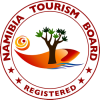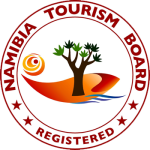Driving in Namibia offers incredible freedom and stunning scenery. But the country's vast distances, remote areas, and unique road conditions require extra caution and preparation. Whether you're a local or visitor, these essential tips will help you stay safe and make the most of your journey.
Namibia follows the British system, so always keep left and overtake right.
Petrol stations can be far apart. Don’t wait until your tank is low. Our vehicles come standard with a long-range diesel tank capable of driving between 800 km and 1,000 km on a single fill.
Bring a physical map or download offline maps. Cell signal can be unreliable in remote areas.
Especially at dawn, dusk, and night. Antelope, warthogs, and livestock often cross roads unexpectedly.
Even experienced drivers should stick to 60–80 km/h to avoid sliding or tire blowouts.
If going into sandy areas like Sossusvlei, reduce tire pressure for better traction.
Driving in Namibia offers incredible freedom and stunning scenery. But the country's vast distances, remote areas, and unique road conditions require extra caution and preparation. Whether you're a local or visitor, these essential tips will help you stay safe and make the most of your journey.
Namibia follows the British system, so always keep left and overtake right.
Petrol stations can be far apart. Don’t wait until your tank is low. Our vehicles come standard with a long-range diesel tank capable of driving between 800 km and 1,000 km on a single fill.
Bring a physical map or download offline maps. Cell signal can be unreliable in remote areas.
Especially at dawn, dusk, and night. Antelope, warthogs, and livestock often cross roads unexpectedly.
Even experienced drivers should stick to 60–80 km/h to avoid sliding or tire blowouts.
If going into sandy areas like Sossusvlei, reduce tire pressure for better traction.
English (widely spoken); Afrikaans, German, and indigenous languages like Oshiwambo are also common.
GMT+2 (same as South African Standard Time)
Nationals and citizens of countries that have not reciprocated Namibia’s gesture of visa exemption are required to apply for a visa in order to gain entry into Namibia. The implementation date for this visa policy was 1 April 2025.
All travelers to Namibia must acquaint themselves with Namibia’s visa requirements and ensure that they are in possession of the required visas before traveling to Namibia.
Apply for your holiday visa (e-visa), (online) visa-on-arrival and short-term employment permit (“work visa”) online at: https://eservices.mhaiss.gov.na/
Other permits must be applied for manually. See the requirements on: https://mha.gov.na/
• Tap water is generally safe in major towns but bottled water is recommended in rural areas.
• Malaria risk in northern regions (Caprivi/Zambezi, Kavango, Kunene) — especially during the rainy season (Nov–April).
• Travel insurance is strongly recommended.
• Healthcare in cities is good, but rural areas have limited facilities.
SIM cards (MTC and TN Mobile) are available at airports and shops, bring an unlocked phone.
(for cell phones you will need to dial the area code before this number)
Tend to be more efficient than the standard police if involved in an incident in Windhoek.
(for cell phones you will need to dial the area code before this number)
Tend to be more efficient than the standard police if involved in an incident in Windhoek.
Whether you are planning your first Namibian safari or already have your route mapped out, do not let questions slow you down. Message us on WhatsApp for any info or help.


VEH01297